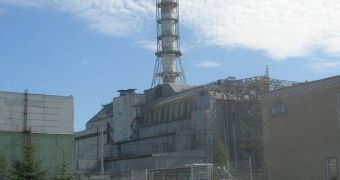Although recent scientific studies have shown that wildlife in the contamination zone around the Chernobyl nuclear power plant has been recovering, the latest research in the field demonstrates the exact opposite. The paper reveals that the animal populations in the 30-kilometer (18-mile) exclusion zone around the exploded reactor are far worse affected by remaining radiation than first thought, and that they are not at all recovering from their ordeal.
Released on Wednesday, the new study shows that the numbers of bumble-bees, butterflies, spiders, grasshoppers and other invertebrates in the danger zone are far lower than in adjacent areas, which seems to support the view that the radiation in the ground and in the air has not yet decayed enough to allow for a normal ecosystem to develop in the region.
“We were amazed to see that there had been no studies on this subject. Ours was the first study to focus on the abundance of animal populations,” French researcher Anders Moller, who is the National Center for Scientific Research expert who has led the new research, tells Reuters.
The nuclear accident that took place at the Chernobyl power plant, in Ukraine, is probably the worst such catastrophe in history. On April 26th, 1986, the number four reactor at the power plant experienced a catastrophic failure and sent plumes of radioactive material into the atmosphere. The power surge that followed blew it up and sent debris as far as surrounding towns.
Just two people passed away in the original explosion, but more than 9,000 died of radiation poisoning in the following months. Greenpeace estimates that some 93,000 individuals will eventually find their end on account of the reactor.
After the initial devastation, Soviet authorities evacuated a number of towns and then poured massive amounts of concrete on the reactor, so as to prevent further material from leaking. Over the past few years, cracks have begun to appear in the “sarcophagus” that covers the radioactive material, which has prompted even more concerns as to the safety of the area where people have yet to return to their homes.

 14 DAY TRIAL //
14 DAY TRIAL //